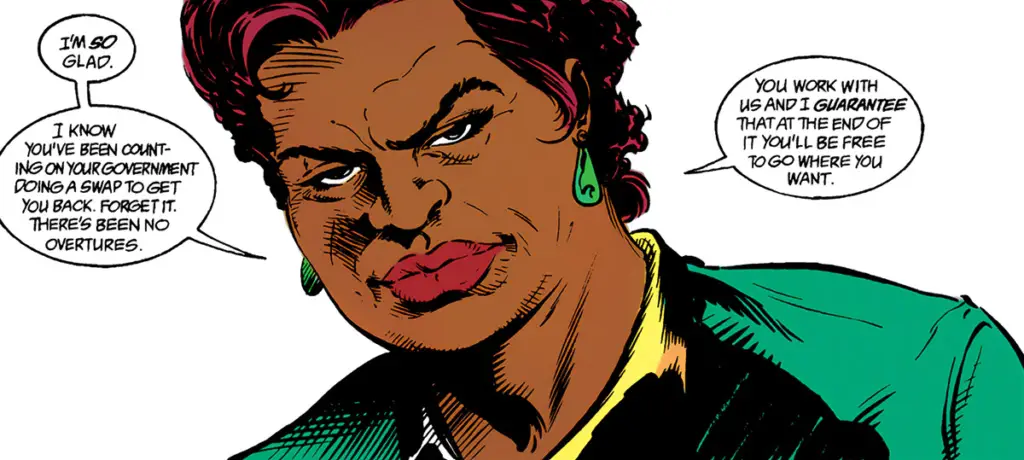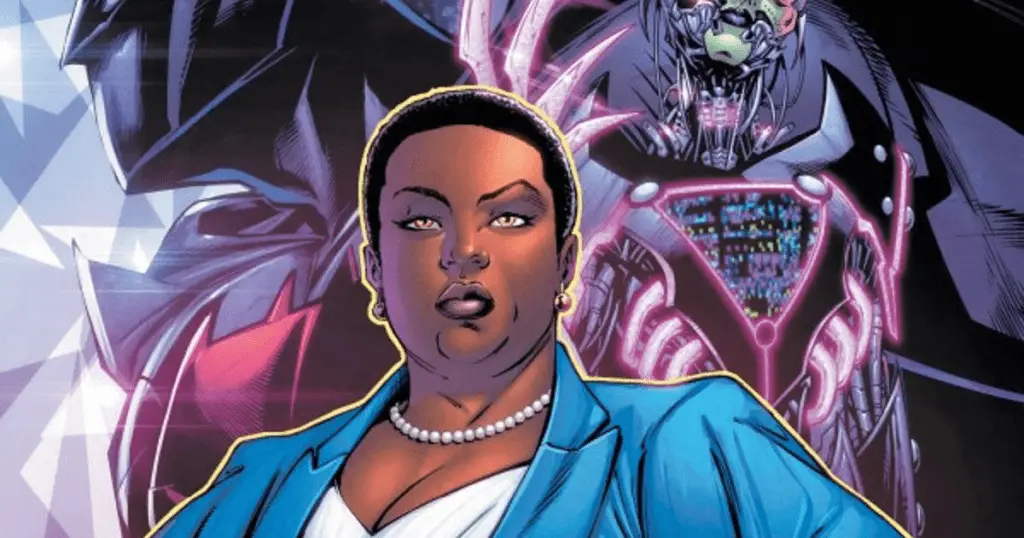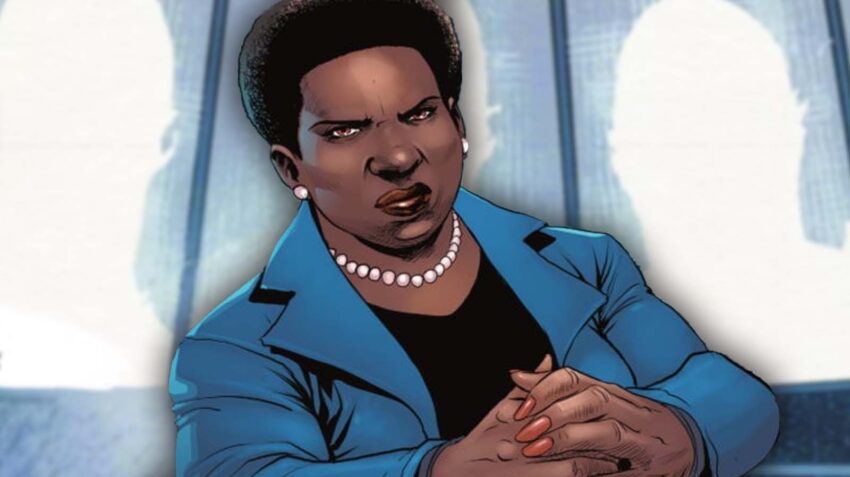Amanda Waller, DC’s representative for political power reaching beyond ethical boundaries. Most people are familiar with The Wall as a security-obsessed, Machiavellian sociopath thanks to the movies and TV, but this vision of the character is a Flanderized version of Waller’s original concept. One that the comics have adapted to in the mid-2000s. So, who was Amanda Waller before she became a genuine villain?
John Ostrander’s Amanda Waller
Amanda Waller’s creation was rooted in the desire to push for big, bold directions. As a survivor of a flawed Chicago housing project, Waller went into politics as a congressional aid. Amanda didn’t have every means to make changes herself, but she could at least coordinate the people who did. Waller’s ability to conscript people to do what she couldn’t is why she forms the Suicide Squad to take on risks Waller can’t get involved in.
All of that in mind, Waller’s original Squad was NOT full of backstabbing cutthroats but troubled volunteer heroes like Vixen. Even the villains on the Squad, like Bronze Tiger and Deadshot, aren’t purely evil but in need of a better direction. While The Wall is still as standoffish as ever, she looks out for everyone’s well-being, calling in psychiatric help for her staff and the Squad agents. Why? Because Waller relates to anyone wanting to turn their life around. Hence, the Squad prefers The Wall over the government, despite mutual dislike.

As for the Wall herself, the reason she kept superheroes around was because she could feel her conscience slipping on the job. There were times when Waller worried about how the deaths of Squad members would affect her relationship with her remaining family. But not as much as the tension with Waller’s superiors when she thinks they cross lines; including but not limited to propping up a Central American dictator with his own Suicide Squad.
Thankfully, there were times when The Wall had to bring herself down. Waller may find ways to secure her ranks, regardless of the consequences, but she still burns out from all the heavy risks she has to take. So, she takes responsibility where it applies the most, accepting prison time and even retiring at the end of Ostrander’s run when the job becomes overwhelming. If she had her way, Waller would’ve happily stayed leading a Caribbean island nation.
Waller Post-911
Between the end of Ostrander’s Suicide Squad and Checkmate, The Wall gets called back into action, often with new Squads or dealing with Meta-Human political affairs. Despite the seediness of her missions, like getting a dictator to commit suicide, The Wall held on to her humanity. Enough to actually (if stoically) bond with the Squad.

Eventually, Waller started to get more and more anti-social. At the very least, Checkmate just gives her a big ego and a heightened sense of paranoia that puts Batman to shame. Luckily, The Wall faces consequences for her extreme actions. Not least of which is Waller’s surviving family disowning her.
The Modern Waller
Starting in the New 52, The Wall becomes the familiar character fans love to hate. Not only from a five-year re-design but also by becoming a full-blown sociopath. What’s a better demonstration of her ferocity than drawing the love and affection of a psychopath? How about the reveal that her counterpart from the “Evil” universe of Earth-3 is a genuinely good person? One that the Wall blackmails to stand in for her by threatening the counterparts of the family Amanda lost. If aborted timelines don’t count, here are some of The Wall’s heinous acts that led to Absolute Power:
- She endangered her nephew
- Manipulated events to start a series of moral panics to give her political and military power beyond the US president
- Exploited high-energy super-prisoners as power sources for her internment camps
- Acted as a mother figure to groom a vulnerable mind into becoming a dangerous weapon (Brainiac Queen)
Why is Waller Evil Now?
So, what pushed this hard-nosed but sentimental figure into becoming a fearmonger? It’s definitely not wrong to say that Waller’s attitude shift happens practically in reaction to public awareness of dirty politics like Guantanamo Bay.

But Waller’s situation isn’t really unique. Before her, Maxwell Lord was a morally gray ally of the Justice League. With a villain spot to fill in for an event, a few retcons mixed with subversion and meta-commentary make a character casual fans don’t really care about instantly memorable. Look no further than Absolute Power: Origins to see how Waller mirrors Lord.
Long-time readers might not enjoy continuity losing consistency, but it’s hard to argue with the results. Characters, much like other symbols, get their meaning from what people associate with them the most. For Amanda Waller, her meaning comes from the social structures meant to help people find direction, twisted into a malignant force that uses people for power.
About The Reviewer: Jake ‘Fracadactyl’ Palermo writes about comics, especially the great ones people might miss. Writes for great stories in overlooked mediums. Social media links are all on here: https://linktr.ee/fracadactyl
We hope you found this article interesting. Come back for more reviews, previews, and opinions on comics, and don’t forget to follow us on social media:
If you’re interested in this creator’s works, remember to let your Local Comic Shop know to find more of their work for you. They would appreciate the call, and so would we.
Click here to find your Local Comic Shop: www.ComicShopLocator.com
As an Amazon Associate, we earn revenue from qualifying purchases to help fund this site. Links to Blu-Rays, DVDs, Books, Movies, and more contained in this article are affiliate links. Please consider purchasing if you find something interesting, and thank you for your support.


